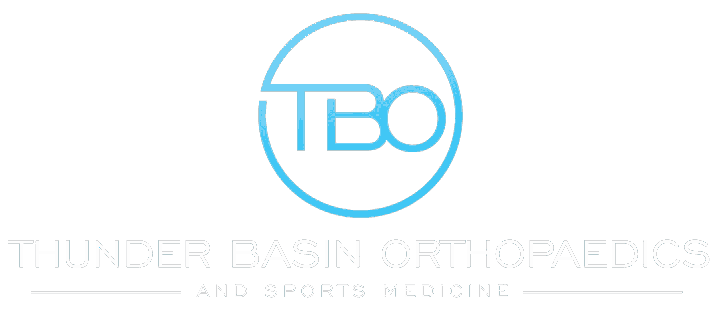A meniscus is a piece of cartilage in your knee that cushions and stabilizes the joint. The purpose of the meniscus is to protect your bones from wear and tear; surprisingly, it only takes a twist of your knee to tear the meniscus. Occasionally a part of the cartilage will break off and catch in the knee joint, which causes it to lock up.
Meniscus tears are unfortunately prevalent and one of the most frequently occurring cartilage injuries of the knee and can be pretty painful and debilitating.
If you have injured your knee and are having pain, you may be wondering if you possibly tore your meniscus. We will discuss who is at the most significant risk and the treatment options available for you to consider.
Contents
Who Is At Risk
Meniscus tears are prevalent in contact sports like football and even non-contact sports that include cutting and jumping like soccer or volleyball.
Older athletes are at the highest risk of suffering from a meniscus tear because it generally weakens, especially after age 65.
If you suddenly alter your direction while running, you can also experience other knee injuries, such as an anterior cruciate ligament (ACL) injury in conjunction with a meniscus tear.
Symptoms Of A Meniscus Tear
If you are having pain in your knee and want to know what a meniscus tear feels like, the symptoms include:
- Pain in your knee area
- Swelling in your knee area
- Bending and straightening your leg is difficult
- Your knee may tend to get locked up or feel stuck
In the beginning, your pain may not be too bad, and you may even continue to be active; however, when the inflammation takes hold, you will experience more discomfort.
Treatment For A Meniscus Tear
Several factors will influence the treatment plan that your orthopedic surgeon will recommend for you. These factors include:
- The size and location of the meniscus tear
- Age
- Activity level
- Related injuries
When the outer area of the meniscus, sometimes called the “red zone,” is torn, it can occasionally heal on its own as it benefits from a good blood supply. However, if the meniscus tear is in the inner area, also known as the “white zone,” which does not benefit from a good blood supply, it will not heal on its own as it does not receive the necessary healing nutrients.
Generally, many meniscus tears do not require surgery. If the symptoms of your meniscus tear do not include locking up, your knee area seems stable, and symptoms resolve, then nonsurgical treatment will most likely be enough.
If you want to support your recovery and speed up the healing process, you can:
- Give your knee some rest if you have pain in your knee, limit your activities and use crutches if needed to help relieve the pain.
- Put ice on your knee if your knee is swollen and painful; ice your knee for 15-20 minutes every 3-4 hours for 2-3 days or longer if necessary, until the pain and swelling are gone.
- Using compression on your knee is another way to help alleviate the swelling knee is to; use a neoprene-type sleeve or elastic wrap on your knee to help relieve the swelling.
- Elevate your knee using a pillow and place it under your heel while laying down or sitting.
- Use over-the-counter anti-inflammatories (NSAIDs) like Motrin. Advil or Aleve to help with the swelling and pain in your knee.
- Do strengthening exercises and stretching to help reduce stress on your knee area and work with a physical therapist or osteopathic doctor to help support your healing process.
Sometimes these treatments work; however, if they do not and the tear is large and creating instability or causing your knee to lock up, surgery may be the best option to remove or repair irregular edges.
The surgery for a meniscus tear is somewhat simple, and generally, you can go home on the same day. Most people have good to excellent results in the short term; however, the long-term consequences of a meniscal tear that is unrepairable usually increase the risk of arthritis in the knee later in life.
Will The Pain In My Knee Stop
Complete recovery from surgery usually takes about 4-6 weeks, but it also depends upon other factors like how severe your meniscus tear was and the type of procedure performed. Everyone heals at different rates, and most of the time, physical therapy is recommended or required to improve recovery and reduce complications.
Once your orthopedic surgeon and medical team agree, you can begin participating in activities slowly. Take it slow, and do not rush quickly, putting a lot of stress on your knee. Maintain a lower level of activity until:
- You can straighten your knee without any pain and fully bend your knee
- You can walk, jump, jog or sprint without any pain
- The swelling in your knee is gone
- The strength in your injured knee is equal to your uninjured knee
Ways To Prevent Meniscus Tears
Meniscus tears are usually an accident and can be hard to prevent, but there are a few things you can do to lower your risk of a knee injury. Here are some tips below.
- Regular exercise to keep your thigh muscles strong
- Warm-up before exercising or participating in an activity to prevent sports injuries
- Rest your body between workouts, as tired muscles are more susceptible to injury
- Ensure your shoes are supportive and fit correctly
- Adjust movements slowly and avoid abrupt increases in your exercise or activities
When you injure your knee, it is critical to understand the extent of the damage and the best way to treat it. Seek the professional help of an orthopedic surgeon to ensure your knee is taken care of the right way.
We Can Help
If you are suffering from pain in your knee, shoulder, or back our medical professionals are experts in the diagnosis, treatment, and surgery of orthopedic injuries, including sports injuries.
At Thunder Basin Orthopaedics, we will work with you to develop the best treatment plan and get you on the road to recovery. Take the first step towards having a pain-free knee and request an appointment with us today.


